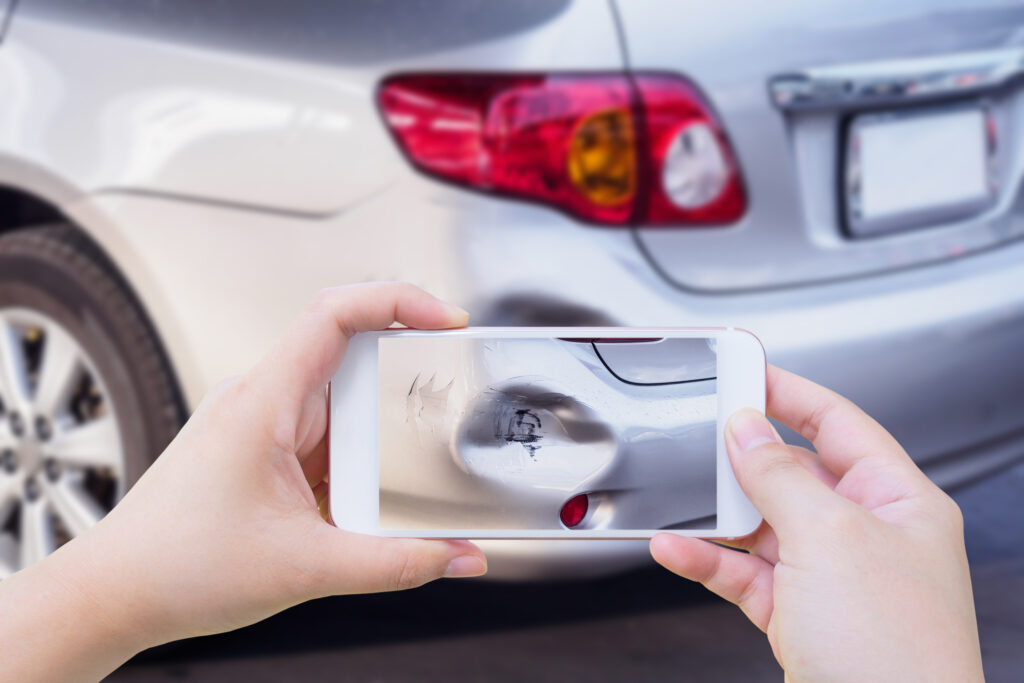By law, rideshare companies must offer coverage options while you drive for them. This is typically basic liability coverage that takes care of bodily injury and property damage. It often doesn’t include full coverage options such as collision and comprehensive.
Even with the protection given by your ridesharing company, you could face being without coverage while you wait for your next passenger. This is because your regular auto insurance won’t cover you once you sign in to your ridesharing app. This includes when you don’t have a passenger. The moment you sign in, you’re now using your car commercially. Your rideshare company will only cover you while you drive to pick up passengers and while you have one in the car.
Many insurers offer coverage to fill the gap between your personal auto policy and what you can get from your ridesharing company. This article will explain everything you need to know about rideshare coverage, including:
- What rideshare insurance is
- What it covers
- Who needs it
- Companies that offer it
- How much it costs
- Uber and Lyft’s coverage options
- Frequently asked questions
How Rideshare Insurance Works
Rideshare insurance covers you if you drive for a ridesharing company. These are also known as transportation network companies (TNCs).
TNCs normally give you a limited amount of coverage. But this only covers you while you drive. It doesn’t protect you while you wait for passengers. Major auto insurance companies offer rideshare coverage to fill the gap in protection that occurs when you’re logged in to a TNC’s app but aren’t driving.
There are three coverage periods that you should know about if you’re a rideshare driver. Some companies like Uber and Lyft might have coverage during each period, but it can vary. Below is a breakdown of each period and the coverage it requires, per the Insurance Information Institute (III):
Period one – coverage gap, unless protected by rideshare coverage
This period starts once you log into your ridesharing app and haven’t yet matched with a potential passenger. This is where you’d have a gap unless you’ve added rideshare coverage to your policy. Neither your standard coverage nor the one from your TNC would likely cover you.
Period two – covered by TNC
In the second period, you’ve matched with and received payment from a passenger. This is the point when you drive to pick up a passenger, and they haven’t entered your car yet. Your ridesharing company’s insurance would protect you during this period.
Period three – covered by TNC
In this period, you’ll have picked up a paying passenger and are on the way to their destination. Like period two, you should also have coverage from your TNC during this period.
Note that you’ll go back to period one once you’ve dropped off your passenger. Keep in mind that your regular auto policy will kick back in once you’ve logged out of the app.
Who Needs Rideshare Insurance?
Rideshare coverage is for people who drive for ridesharing companies. You can use the coverage options that your TNC offers you. But you’ll meet an insurance gap for at least some time while you’re logged in to the driving service. You’d need to pay out of pocket for damages if you aren’t driving. This coverage exists to ensure that you have protection for the entire time you drive for a TNC.
You should consider that you may risk losing your car insurance if you don’t tell your insurer that you drive for a ridesharing company. They’re likely to cancel or choose not to renew your policy if they somehow find out that you drove for Uber or Lyft without telling them first. Be sure to contact your provider to let them know you plan on rideshare driving. They’ll also be able to help you get rideshare coverage if they offer it.
What Does It Cover?
Rideshare insurance typically covers much more than what TNCs offer. It can also extend into all three ridesharing periods, depending on the company. Below are some examples of rideshare coverages:
- Bodily injury liability (BIL)
- Property damage liability (PDL)
- Collision and comprehensive
- Personal injury protection (PIP)
- Uninsured (UM) and uninsured motorist (UIM)
Rideshare coverage may also include some other add-ons such as MedPay or rental reimbursement. This is most often the case if it’s already on your existing policy.
Which Companies Offer Rideshare Insurance?
Most major insurance companies offer rideshare coverage if you drive for Uber or Lyft. Be aware that some insurers may only offer this in select states. Some might not even offer it at all. Consider double-checking with your provider to see if it has it.
Another choice is a commercial policy. Some states may require this in place of rideshare coverage. Consider that this can be much more expensive than rideshare insurance.
Below is a list of some well-known insurers that offer rideshare coverage:
- Progressive
- State Farm
- GEICO
- USAA
- Allstate
- Liberty Mutual
- American Family
- Farmers
- Mercury
- PEMCO
How Much It Costs
Rideshare insurance is likely to increase your rates because it’s an add-on to your policy. The exact price you’ll pay for this coverage depends on your provider. Remember that many things affect the cost of your premium. Your prices typically go up or down based on factors such as:
- Your driving record
- Your claim history
- Your car’s make and model
- Your car’s yearly mileage
- Where you live
Uber and Lyft’s Coverage Options
Uber and Lyft both offer car insurance options while you drive for them. Both companies share the same benefits in terms of auto coverage. The following are Uber and Lyft’s available coverage and limits:
While waiting for ride request (period one):
Bodily injury liability coverage:
- $50,000 per person
- $100,000 per incident
Property damage liability coverage:
- $25,000 per accident
With passengers or en route to them (periods two and three):
- $1,000,000 for third-party liability coverage
- Uninsured/underinsured motorist bodily injury liability coverage
- Contingent comprehensive and collision coverage ($2,500 deductible)
Frequently Asked Questions
Does driving for Uber or Lyft raise your premium?
Your car insurer won’t raise your rates just because you drive for a ridesharing company. But you could end up paying more if you add rideshare coverage to your policy or need to buy commercial auto insurance.
Is rideshare coverage required?
Rideshare insurance isn’t required. You’ll likely receive coverage from your TNC, but you could have gaps while you sit and wait to match with a customer. Rideshare coverage helps to fill those gaps, so you always have protection while you’re out working.
A rideshare endorsement isn’t the only choice. You could get a commercial auto policy. This can also give you coverage while you drive for a TNC.
Do I have to tell my auto insurer that I drive for Uber or Lyft?
You should contact your insurer ASAP if you plan on driving for Uber or Lyft. Driving for a rideshare service could violate the terms of your policy. They could cancel your policy if they discover that you’re driving without telling them.
Do Uber and Lyft offer rideshare coverage?
Rideshare services such as Uber and Lyft don’t offer the same kind of coverage that insurance companies offer. Instead, they offer their own options that include liability, UM/UIM, and more.


